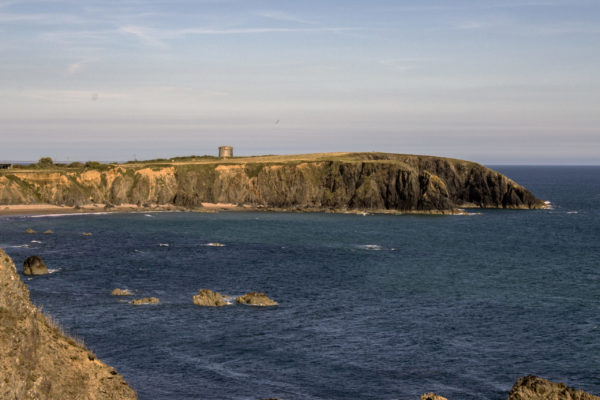Folk memory suggests that this place gained its name because the Norman ships that landed here were named ‘La Bague’ and ‘La Bonne’. Whether that story is true or not, the couplet ‘By the creek of Baginbun, Ireland was lost and won’ is well remembered here in Wexford. It refers to the Normans’ victory over the local forces who fought them here on their arrival.
Unwelcome Visitors
In May 1170 a small force of Norman soldiers, commanded by Raymond le Gros, landed on the beach here and set up camp on the high ground above it. After the arrival of the first force of Normans at Bannow in 1169 the Irish understood the threat posed by these new invaders and within weeks the Norman camp was attacked by a large force of Irish and Hiberno-Norse warriors from nearby Waterford.
Thanks to the substantial defences they had prepared the Normans defeated these local warriors. History records that 70 of the defeated warriors had their legs broken before being thrown alive off the cliffs of Baginbun. ‘The Song of Dermot and the Earl’ describes an even more grisly end for the 70 captives. It notes that Alice of Abervenny, who lost her lover in the combat, beheaded them all before throwing their bodies over the cliffs.
In August the Normans marched to Waterford City alongside Richard de Clare, who is also known as ‘Strongbow’. De Clare, who became the Norman Lord of Leinster, had landed with a second larger force across Waterford Harbour.
–
To find Baginbun…
Type these coordinates into Google: 52.176607, -6.830789
–
To the West along the Way lies… Loftus Hall
To the East along the Way lies… Fethard Castle
–


